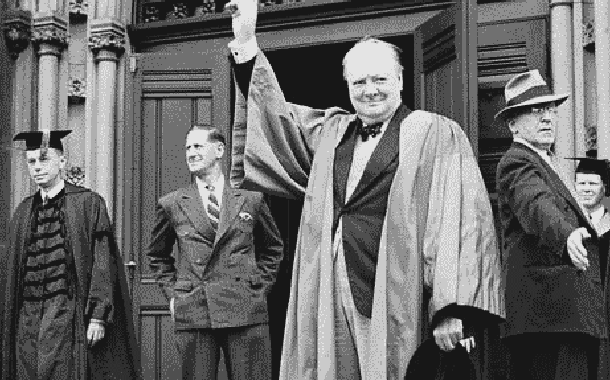<![CDATA[On the morning of the 8th September 1940, Londoners emerged from their homes and bomb shelters to survey the damage from the first night of the Blitz. The previous evening, three hundred German bombers had raided London, bringing the 'Blitzkreig' (lightning war) to British shores. This ferocious battle plan of the German war machine had already conquered most of Western Europe, and the intention was to quickly pound the United Kingdom into submission by breaking the morale of the urban civilian population. The Blitz symbolised the growing German awareness that a land invasion of Britain would be a long, arduous and costly undertaking. Since the capitulation of France, Hitler's gaze had moved across the Channel. Britain had become isolated, its allies in Western Europe were defeated, the US was not yet involved in the War, and the Soviet Union had signed the Molotov-Ribbentrop Pact with Germany, ensuring temporary non-aggression between the two powers. The Nazis wanted Britain neutralised quickly, so they could turn their attentions to the East. Since June 1940 British shipping in the Channel had been under attack, and the German Luftwaffe had launched a series of aerial raids on Britain, in order to weaken the RAF. Despite these actions, there seemed little sign of a British surrender, and so the bombing campaign was started. During the first night of bombing, a total of 337 tons of explosives were dropped on London. This was the start of fifty seven consecutive nights of bombing on the capital and other cities. The raids continued afterwards, although with not quite the same frequency. By May 21st 1941, sixteen British cities had been victim to major bombing raids (defined as an attack where over a hundred tons of explosives were dropped). London itself was attacked on seventy one separate occasions, with Birmingham, Liverpool and Plymouth each attacked eight times. Over a million British houses were destroyed, and 40,000 lives lost, with over 20,000 of these just in London. Particular devastation occurred in the East of London, a predominantly working class area. Although the main focus of the campaign was to break the infrastructure and industry of Britain, errant bombs and uncontrollable fires quickly spread into slum areas. For instance, during the first night of bombings, over four hundred civilians died who lived in the vicinity of the intended target, the East London Docks. Four years after the start of the Blitz, the first German V2 rocket hit Chiswick, a suburb to the West of London, killing four people. The subsequent bombing campaign by V1 and V2 rockets was called the 'Baby Blitz'. In the following six months more than 2,500 people were killed by rocket attacks. In total, Germany launched 9,000 rockets attacks against England, although over half never reached their intended targets, as a result of technical faults and anti air craft fire. These events, and Britain's ability to survive them, have become a crucial part of the country's cultural history and memory. Anyone who grew up in a British town or city is likely to have been shown the location of at least one building or street that was destroyed during the Blitz. The architecture of whole cities has been defined by the destruction caused by the bombing campaign. The historical centre of Coventry was almost completely destroyed in an intense bombing raid in November 1940, meaning the city centre has an unnaturally uniform and modern aesthetic. In London especially, the 'Blitz Spirit' has become part of culture, a defining moment in the country's history when communities suffered and survived together.]]>
September: A Month of Bombs and Rockets
